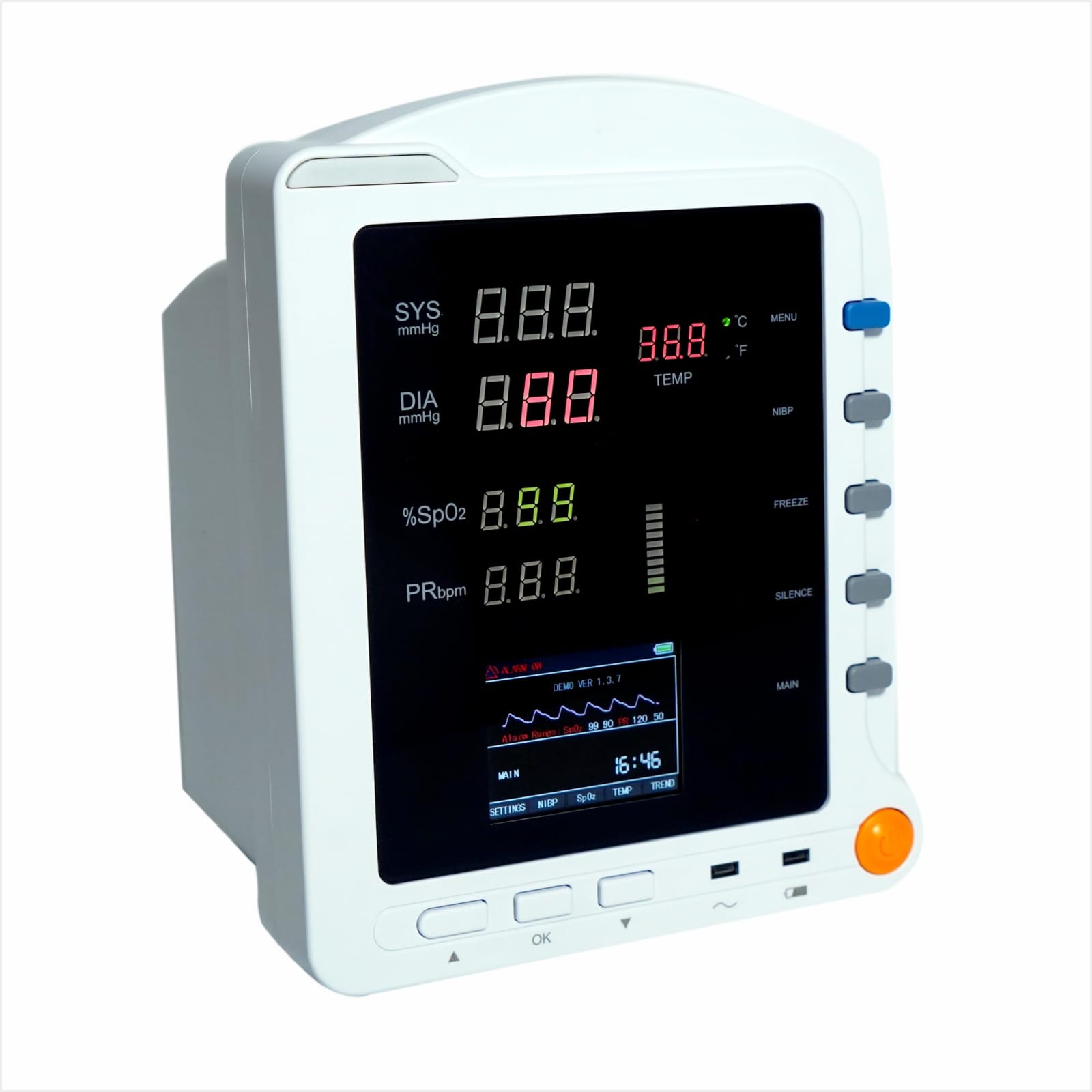Monitor
Rentable
Description:
In medical use cases, monitors are essential for tracking patient vital signs, such as heart rate, blood pressure, oxygen saturation, and temperature. These devices provide real-time data to healthcare providers, allowing for immediate response to changes in a patient's condition. Monitors are used in hospitals, clinics, and ambulances to ensure accurate diagnosis and timely interventions.
- Pros of Patient Monitor:
- Real-Time Monitoring: Continuously tracks vital signs such as heart rate, blood pressure, oxygen levels, and respiratory rate.
- Immediate Alerts: Provides alarms for abnormal readings, enabling quick medical intervention.
- Comprehensive Data: Collects detailed information about a patient’s condition over time for accurate diagnosis and treatment planning.
- Remote Monitoring: Modern monitors allow healthcare professionals to track patient vitals remotely, enhancing care for patients at home.
- Versatility: Suitable for various healthcare settings, including ICUs, emergency rooms, and home care.
- Non-Invasive: Uses sensors and electrodes to gather data without causing discomfort to the patient.
- Customizable Settings: Allows healthcare providers to set parameters tailored to each patient’s condition.
- Cons of Patient Monitor:
- Cost: High-quality monitors and their maintenance can be expensive, making them less accessible in resource-limited settings.
- Dependency on Power: Requires a reliable power source or battery, limiting usage in areas with frequent power outages.
- False Alarms: Can produce false positives due to sensor misplacement or patient movement, causing unnecessary concern.
- Complexity: Requires trained personnel to operate and interpret data accurately.
- Maintenance: Regular calibration and maintenance are necessary to ensure accurate readings.
- Limited Mobility: Traditional monitors may restrict patient movement, especially in hospital settings.
- Data Overload: Continuous monitoring can generate large amounts of data, requiring careful analysis to avoid missing critical trends.
- Suitability:
- Good for: Critical care patients, individuals undergoing surgery, or those requiring continuous observation of vital signs.
- Not Ideal for: Patients with minor or non-urgent conditions that do not require continuous monitoring.
Patient monitors are essential tools in healthcare, providing critical insights into a patient’s condition. Consult with a healthcare provider to determine the need for monitoring in your situation.




